Dad was a recent college graduate in 1958. He knew with Vietnam heating up, and with his college days behind him, he would either be drafted into the military and go God knows where; or, he could enlist and apply for Officers Candidate School. Dad chose the US Navy, and was accepted to OCS.
Fast forward to 1959, and Dad is on the USS Polk County, an LST or Landing Ship Tank. He jokingly suggests “LST really stood for Long Slow Target.” While on shore leave in either Sasebo Japan, or Hong Kong (it was over sixty years ago), dad bought this Voigtlander Vitomatic II camera. Cannonball Adderly released his “Things Are Getting Better” album that year. Dad, a jazz fan, would’ve likely been rocking out to “Groovin’ High” when he loaded his first roll of Kodachrome. The camera would be his companion for years, traveling the world around his neck.
I had used the thing a bit in my High School photography class in the mid-eighties. It’s stout, compact, and well made. But, nearly sixty five years since new, it needed some attention. Recently rediscovering film photography, I’d already collected Dad’s Nikon FM as well as his Pentax 645. Both needed a fair amount of work to get back to their former glory. Along the way, I acquired a friend’s Nikon FE; and more recently a 1965 Leica M3.
The Voigtlander sat on my camera shelf largely ignored since my local camera shop had pronounced its non-operable rangefinder and stuck focusing ring “unrepairable.” I stumbled on Radu Lesaru while reading about the difficulty finding film camera repair experts; particularly, those whose expertise includes esoteric rangefinders from the fifties and sixties. Responding to my request for help, Radu asked for some photos of the camera. I was elated when he said he could fix it. Even a six to eight month wait would not deter me, as the camera has been sitting useless for years. My heart sank when Radu reached out to let me know the focusing ring was jammed and not repairable and that the rangefinder mechanism was busted. My sadness at the camera’s sorry state and the unavailability of replacement parts was replaced with optimism when Lesaru told me he could buy parts cameras on EBay for as little as $40-60.
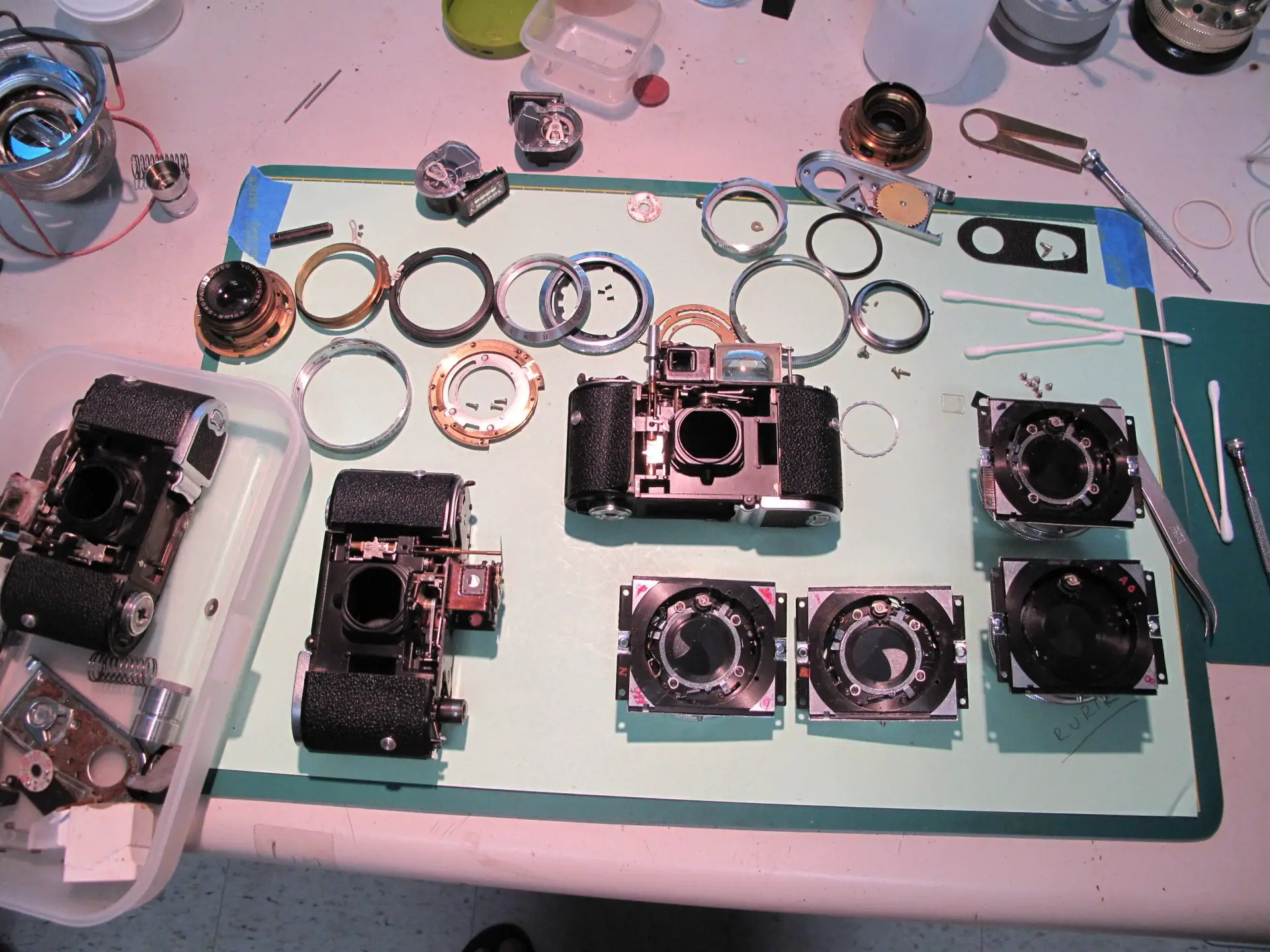
About a week later, I got an email from Radu simply stating “Your camera is done.” The week I spent waiting for the camera to arrive was filled with excitement as I tracked the package’s cross-country trip daily.
Opening the carefully packed shipping box, I couldn’t believe how great the camera looked. The focusing ring turned easily with just the right amount of mechanical resistance. And, most importantly, the previously non-operational rangefinder was bright and clear and easy to get into focus.
Loading up a fresh roll of Portra 400, I forgot the maximum shutter speed on the Vitomatic II is a scorching 1/300. Note to self: next time, try slower film. Unwilling to trust the old selenium meter built into the camera, I slid my Keks KM-02 light meter into the cold shoe. As it turns out, the original meter was fairly close. I don’t think I ever noticed more than a half stop difference between what the Keks told me and what the meter said. Perhaps sitting in its original case on a dark shelf is what saved this one.
Using the camera is fairly straightforward. To load it, first open the latch on the small door on the bottom. Once the small door is open, the entire back swings to the right, allowing access to the take up spool. Interestingly, Radu let me know the Vitomatic ii will not fire the shutter without film inside. Presumably one could manipulate the sprocket which rotates as the film is advanced. I did not try. Once the film is loaded and a couple of shutter releases and windings have been done, the counter on the bottom plate of the camera may be reset to “36” by pressing and turning the knurled piece below the dial simultaneously. Incidentally, this counter counts backwards, from 36 to 0.
One final quirk to point out about operating the Vitomatic ii is the location of the shutter speed and aperture controls. They are both on the lens (a fixed, super-sharp 50mm Skopar f/2.8) itself. And, since they do not move completely independently, one must pay close attention to shutter speed while adjusting aperture, as it is possible to inadvertently change it, particularly when wide-open or stopped all the way down.
I shot a variety of subjects with that first roll; a good part used on a cloudy morning at Frank Monise Motors in Rancho Cucamonga, California. My friends Frank and Greg Monise’s British car restoration shop is always full of vintage MGs, Triumphs and a gaggle of old racing cars. I figured a vintage camera would fit right in. Shooting these pictures using the same method I use when shooting Portra400 in my Leica M3 had me metering for shadows and generally erring on the side of a half stop or more overexposed.
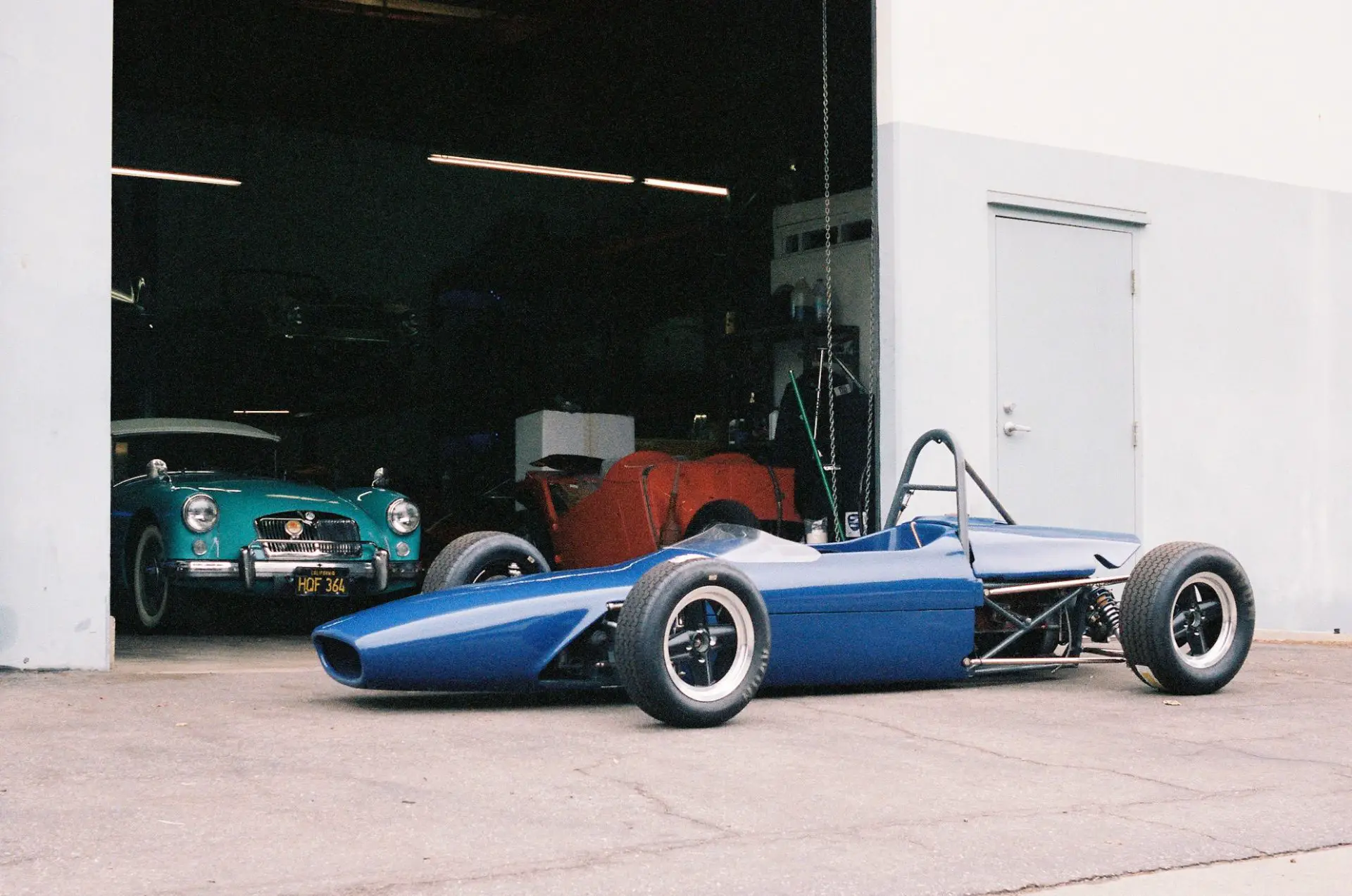
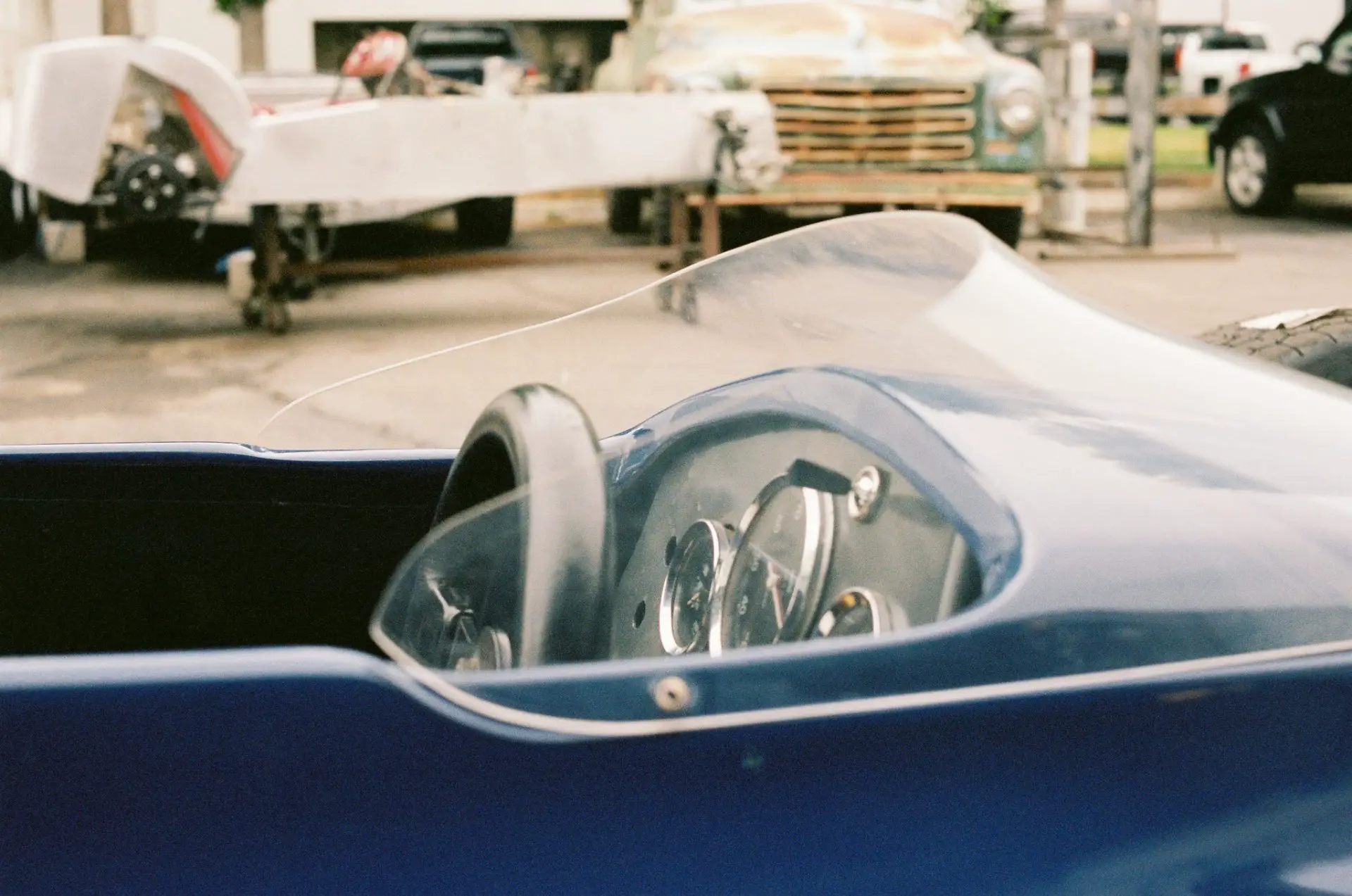
The next day, wanting to burn off the end of the roll, I drove to the top of a nearby parking structure in bright midday light.
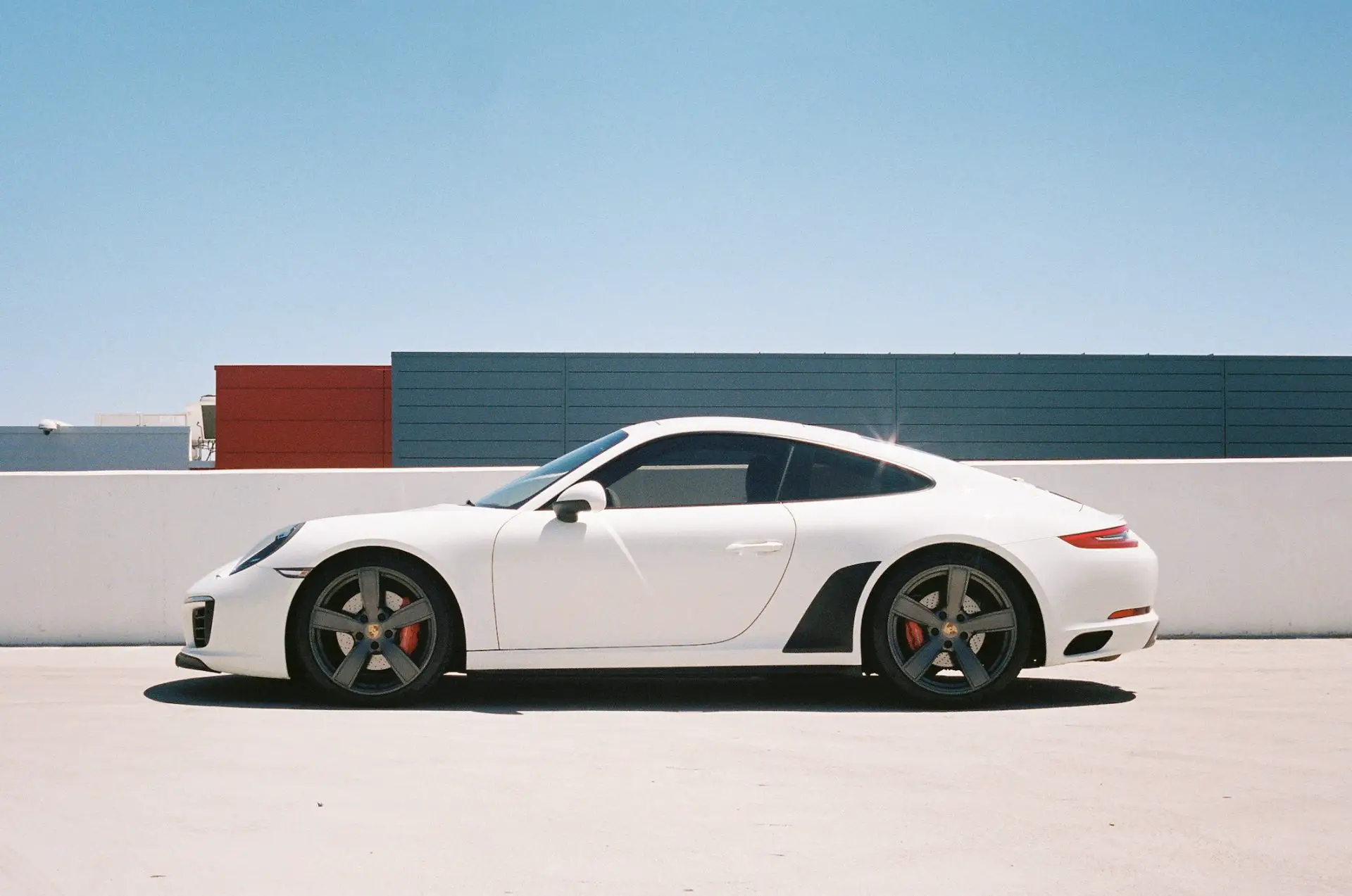
Finally, I took this abstract shot of a pool waterfall from above.
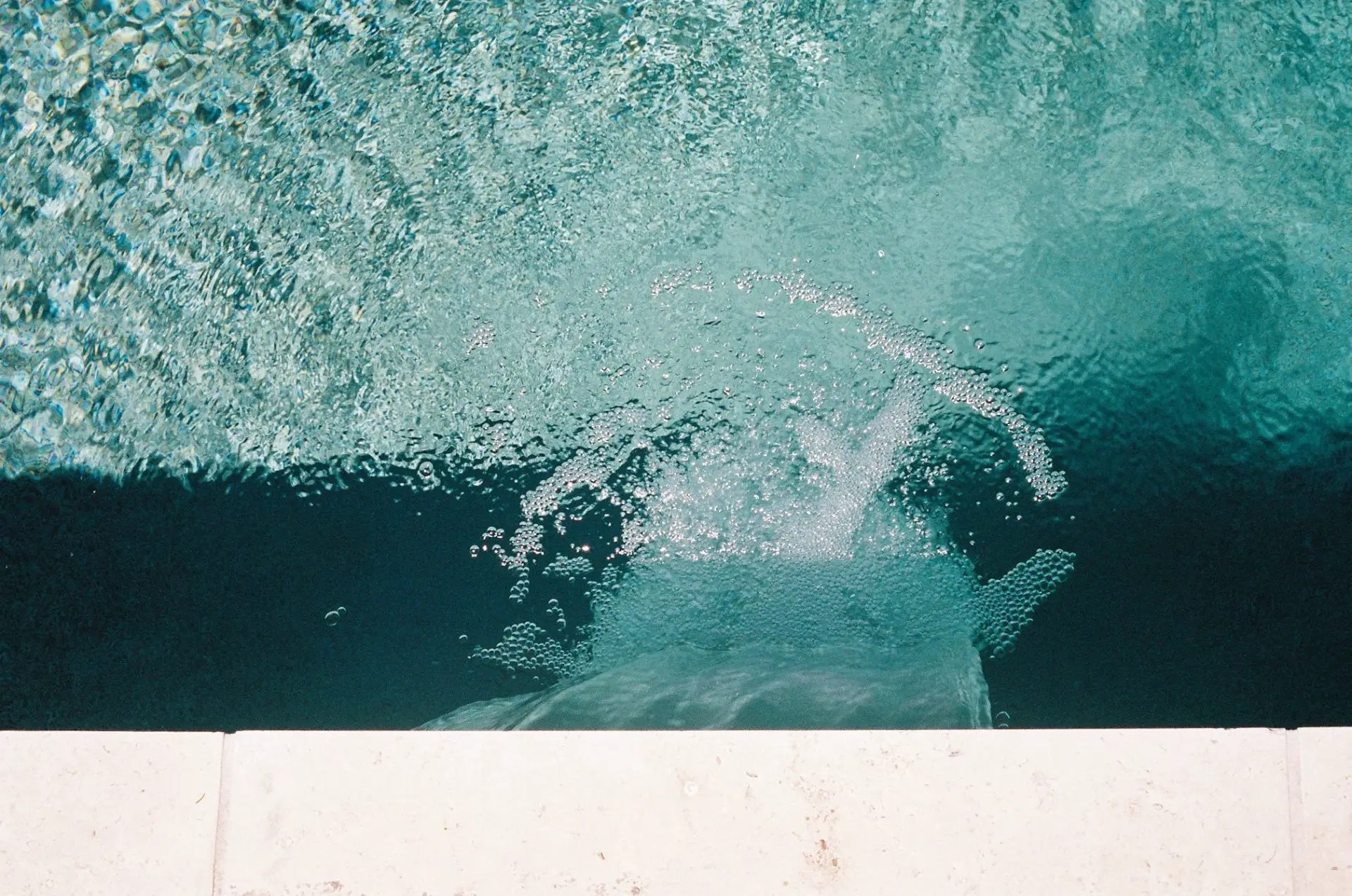
To say I am pleased with the results would be a modest understatement. A cherished keepsake, which until recently only collected dust, is once again a trusted tool for making beautiful images.
Share this post:
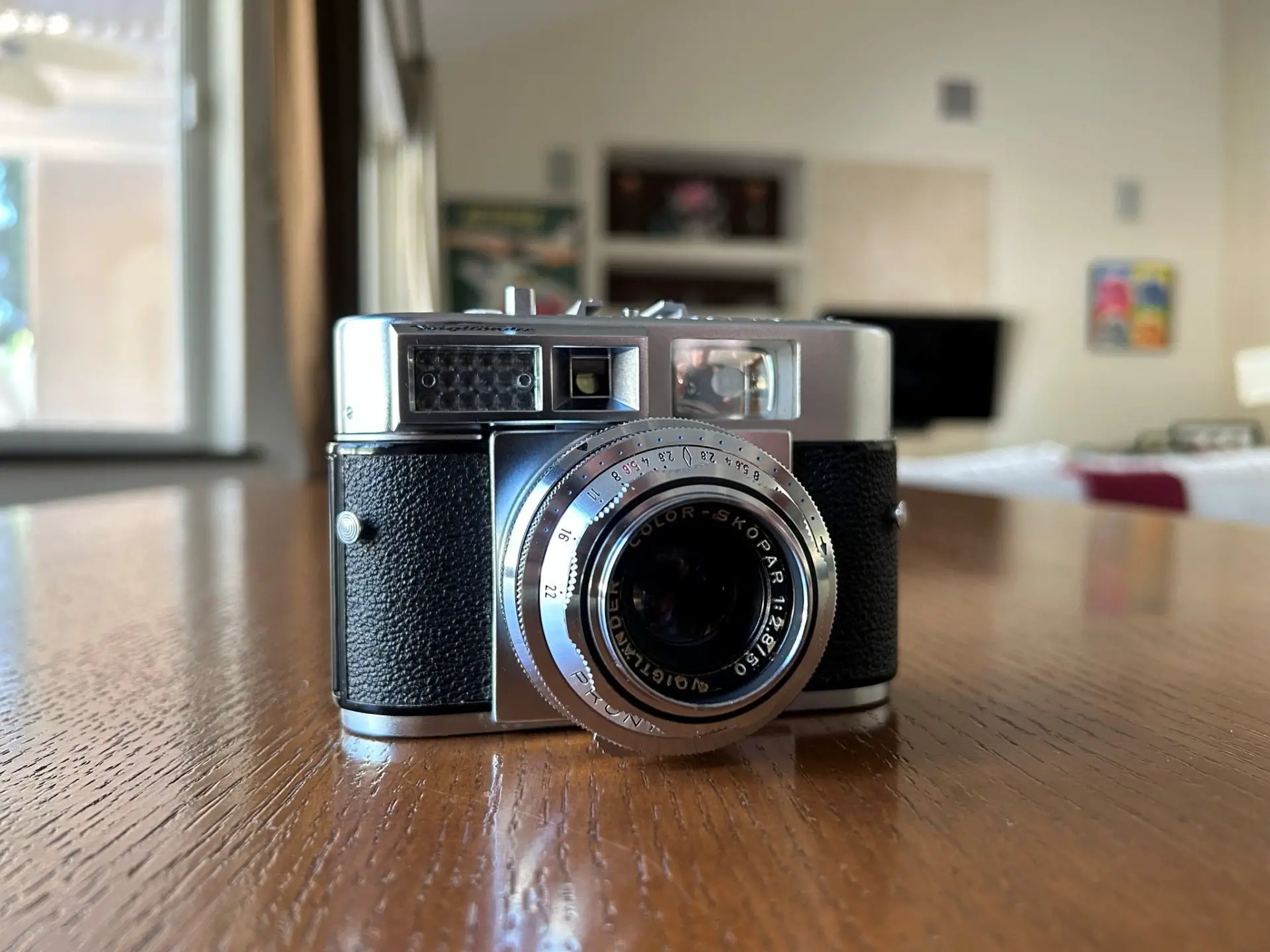



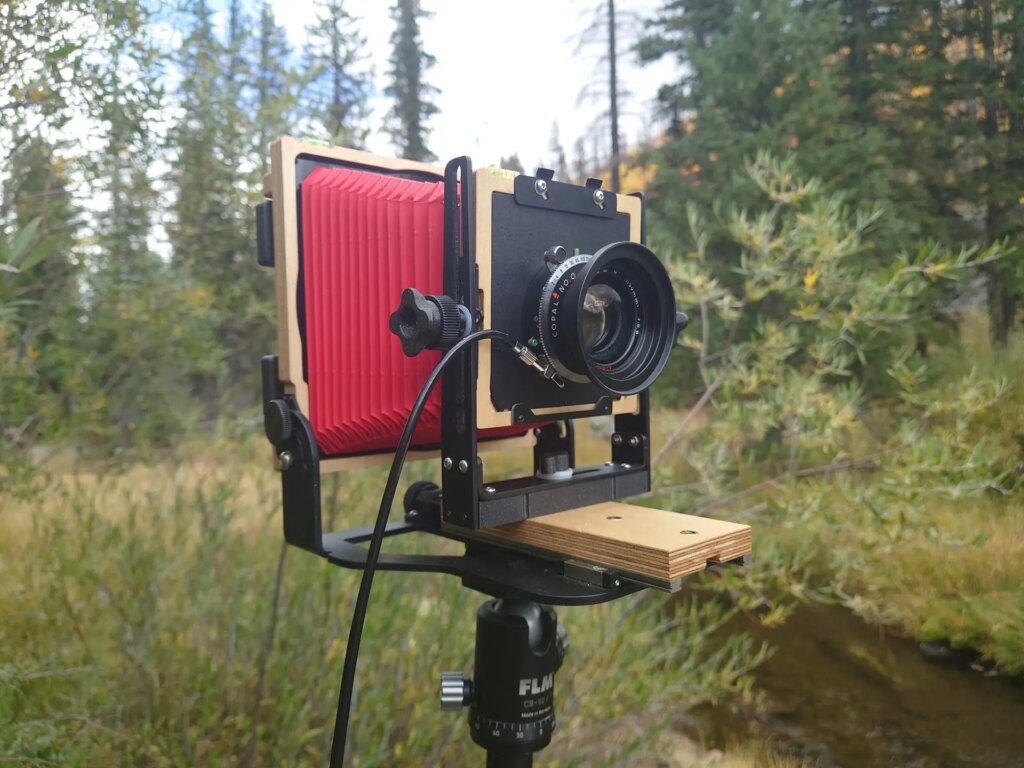




Comments
Bob Janes on Voigtlander Vitomatic ii: from paperweight to family heirloom
Comment posted: 06/10/2023
It can be difficult sometimes to reconcile an inevitable decline in these old stalwart cameras, and I found myself drawing parallels between faults that have developed in my father's cameras (one of which was brought back from the Korean war) and his own decline. It is lovely when these cameras perform as we remember they used to and can remind us of our heroes.
Comment posted: 06/10/2023
DeeDee Yelverton on Voigtlander Vitomatic ii: from paperweight to family heirloom
Comment posted: 06/10/2023
Comment posted: 06/10/2023
Steviemac on Voigtlander Vitomatic ii: from paperweight to family heirloom
Comment posted: 06/10/2023
Kudos to you for having it recommissioned, you saved a quality piece of photographic history and patronised an independent, specialist repair business at the same time. Your photograph of the Porsche is particularly striking and is a great composition.
Comment posted: 06/10/2023
Comment posted: 06/10/2023
Comment posted: 06/10/2023
Murray on Voigtlander Vitomatic ii: from paperweight to family heirloom
Comment posted: 06/10/2023
Bill White on Voigtlander Vitomatic ii: from paperweight to family heirloom
Comment posted: 06/10/2023
Comment posted: 06/10/2023
John F. on Voigtlander Vitomatic ii: from paperweight to family heirloom
Comment posted: 06/10/2023
Comment posted: 06/10/2023
Matt on Voigtlander Vitomatic ii: from paperweight to family heirloom
Comment posted: 06/10/2023
Comment posted: 06/10/2023
Bruce Newman on Voigtlander Vitomatic ii: from paperweight to family heirloom
Comment posted: 07/10/2023
Am a proud poppa or what?
Maybe Brad would like to fill out the "Grandpa's Mustang" story a little. It was quite an adventure.
It all started when my dad, way back when, said to Brad, "someday this will be your car."
Best regards to all who wrote in.
Bruce
Comment posted: 07/10/2023
Arne Heeringa on Voigtlander Vitomatic ii: from paperweight to family heirloom
Comment posted: 07/10/2023
Yes, darkness saves selenium meters! And moving the sprockets is indeed not such a good idea as I experienced with an original Zeiss Contessa, a similar camera as the one the uncle of my ex-wife shot his wonderful pictures with. Thankfully we still have the wonderful camera repairman Dieter Bilzer about 30 km from here.
Eric on Voigtlander Vitomatic ii: from paperweight to family heirloom
Comment posted: 09/10/2023